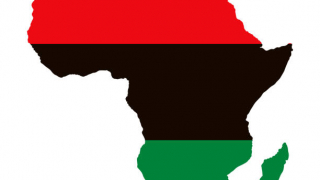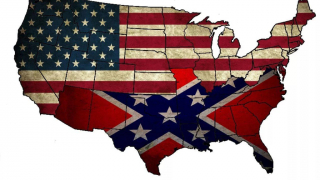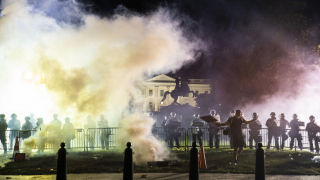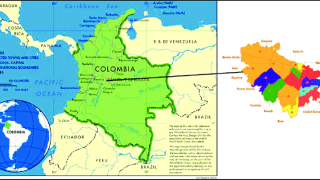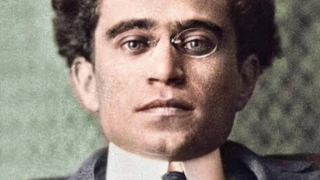Searching for Common Ground with the Yankees
22.03.2018
It is all too easy for those in the South and the other region-nations that make up the artificial entity called the [u]nited States to ridicule New England for her bad traits and other peculiarities. We do not want to do that here. Rather, we want to look at some of the good traits of the Yankee folk. For unless we find some common ground with them, they will forever remain a people apart, locked up in their own world of delusion, a danger to people everywhere.
In her earlier days, then, one could find virtues such as those below, which are close to ideals held by the Orthodox Church.
-An understanding of the good that comes from fasting:
New England’s food ways also owed much to the Christian asceticism of its founders, who were among the earliest Americans to associate plain cooking with piety, and vegetables with virtue. . . . (Fischer, Albion’s Seed, p. 135)
Gov John Winthrop once wrote, for example,
. . . I find by oft and repeated experience, that when I hold under the flesh by temperate diet, and not suffering the mind or outward senses to have everything they desire, and wean it from the love of the world, I ever then pray without weariness, or ordinary wandering of heart, and am far more fit and cheerful in the duties of my calling (Ibid.).
Prof Fischer, speaking of the rest of the passage by Winthrop, explains,
He thought of eating as “feeding,” fasting as a form of “revival,” appetite as “a bear at the stake,” and the “outward senses” as a source of spiritual danger. These attitudes comprised a gastronomic Puritanism which persisted in New England long after the Five Points had been forgotten (Ibid.).
-Just business practices:
John Cotton wrote the following principles, which reflect the mindset of early New England:
Some false principles are these: 1. That a man might sell as dear as he can, and buy as cheap as he can. 2. If a man lose by casualty at sea, etc., in some of his commodities, he may raise the price of the rest; 3. That he may sell as he bought, though he paid too dear, etc., and though the commodity be fallen, etc. 4. That, as a man may take advantage of his own skill or ability, so he may take advantage of another’s ignorance or necessity. 5. Where one gives time for payment, he is to take like recompense of one as of another.
The rules for trading are these: 1. A man may not sell above the current price. . . . 2. When a man loseth in his commodity for want of skill, etc., he must look at it as his own fault or cross, and therefore must not lay it upon another. 3. Where a man loseth by casualty of sea, or, etc., it is a loss cast upon himself by providence, and he may not ease himself of it by casting it upon another. . . . but where there is a scarcity of the commodity, there men may raise their price; for now it is a hand of God upon the commodity and not the person. 4. A man may not ask any more for his commodity than his selling price, as Ephron to Abraham, the land is worth thus much (Fischer, p. 157).
-Guarding against great concentrations of wealth:
. . . The builders of the Bay Colony deliberately apportioned the productive assets of their province so as to maintain the social distinctions which they thought proper in a Bible Commonwealth. Leaders of the community were given larger shares of land; so were those who had held more property in England, and families with many children and servants. Distinctions of social rank were carefully respected, but gross disparities were uncommon. In most cases, town proprietors were men of middling status—yeomen and husbandmen who tended to be neither very rich nor very poor. They distributed the land in such a way as to multiply their own class. There was no small elite of great landlords in most Massachusetts towns during the seventeenth century (Fischer, p. 167).
As we have noted before, New England has her faults, but here we see some of her virtues, virtues not unlike those of Orthodox countries, which could serve as a doorway for her to enter into the Church. And this is important, for we desire to see not only an Orthodox South, but also an Orthodox New England. For that is when peoples are most truly themselves, when they are united to the Logos, Jesus Christ. It is He Who gives life to each kin-group, and a perfect, unique form, a telos, for each one to attain to.
Protestantism and secular materialism - these are not what Christ brought New England into being to achieve. They do not reveal to the world the true beauty of her soul but obscure it within the ugly distortions they have caused. And yet some of its rays still have shone through here and there. But only through the healing of the Orthodox Faith will the full brightness of her goodness and beauty be made known.
And, lo! If one goes back far enough, he will find that the forefathers of the New England settlers, who were mostly from East Anglia and Essex (in ‘Old’ England), were Orthodox. This changed, sadly, with the Roman Catholic Norman Invasion in 1066, and then further with the Protestant Reformation some centuries later. But their Orthodox past is nevertheless very real; the Yankees thus have a wonderful patrimony they may embrace again whenever they choose, though they have been sundered from it for generations by invasion, conquest, and false teaching. The fact that it is not completely foreign to them should help in their re-assimilation of the Orthodox Way into their national life. The fact that they have tasted and rejected the Western heresies, that they have passed into post-Modernity, may help as well, something Fr Seraphim Rose (+1982) thought would benefit the Orthodox Church in her evangelism in the States.
Heretofore, New England has been proud of her progressive spirit. Let her now be proud instead of the great treasures of holiness that her homeland of East Anglia and Essex holds. Instead of tradition-destroying ideologies, let her spend her strength in spreading and bolstering the timeless Tradition of the Orthodox Church.
Her Orthodox mothers and fathers are calling to her:
. . .
Eastern England is made up of two of the seven ancient kingdoms of England, East Anglia and Essex, peopled by the East Angles and their cousins the East Saxons. This was once a self-contained area, bordered to the east and north by the North Sea, to the south by the broad River Thames, and to the west by the eastern Midlands, ancient Mercia. In times past that was an impassable area of river and marsh called the fens. In modern terms East Anglia and Essex mean the two counties of Norfolk and Suffolk with the area around the Isle of Ely (now in neighbouring eastern Cambridgeshire), and the county of Essex. However, Orthodox Christianity arrived here before England even existed, in the first centuries after Christ. Indeed, within a few years of Christ’s Resurrection Colchester in Essex briefly became the capital of Roman Britain until London had been founded, and it may have been there that the first Christian community appeared.
In any case it is recorded that there may have been a bishop from Colchester who attended a council in Gaul in 314. Certainly, archaeologists have confirmed the existence of a church in Colchester, one of the most important Roman settlements in the country, in the late fourth century. This lasted into the first half of the fifth century and its foundations can be visited. Other bishops from Britain are recorded attending councils abroad in 347 and 359. Baptismal fonts have been found from a villa at Icklingham in Suffolk from the same period and on the Norfolk coast there is an early place name ‘Eccles’, from the Greek word for church, ‘ecclesia’ (like the word ‘church’ itself, from the Greek ‘kyriakon’, ‘the Lord’s house’. However, such urban or villa Roman Orthodoxy had all but died out by the mid-fifth century, as the Roman elite had left these shores, leaving the people unconverted. Only archaeology can confirm even the existence of the little that they left behind.
Holiness: Twelve Saints (643-1016)
After the Roman period and the settlement of the English, there opened in the seventh century a new and deeper Orthodox Christian age, a golden age of saints, both missionaries from across the seas and native. Although nine of these twelve saints lived in the seventh century, three others lived later, continuing the tradition of holiness even into the early eleventh century. The two Irish saints, St Fursey and St Deicola, were ‘wandering saints’ and only stayed here for a short time. Nine of them are venerated only locally, like the two Irish saints above, St Sigebert, St Jurmin, St Osyth and St Withburgh, or regionally like St Felix, St Cedd and St Walstan, but St Botolph, St Audrey and St Edmund were and are venerated nationally and even internationally. Places of pilgrimage to their relics are Ely and Bury St Edmunds, places of pilgrimage to where they lived are Bawburgh, Bradwell-on-Sea, Burgh Castle, Hoxne and Iken. These twelve saints are:
St Sigebert (+ c. 643), King of East Anglia, had lived in exile in France and become a Christian. He was the son or stepson of King Raedwald, the first baptized King of East Anglia, whose burial-hoard became famous when discovered at Sutton Hoo in Suffolk in 1939. In 630 King Sigebert invited the future St Felix to come from Burgundy and evangelize his kingdom. Sigebert later founded a monastery in what became Bury St Edmunds in Suffolk and, having abdicated, became a monk there, but was later killed by pagan Mercians.
After seventeen years of activity St Felix (+ 647) came to be known as the ‘Apostle of East Anglia’. He established his centre at the old Roman port of Dunwich in Suffolk (though some say in the now vanished Roman shore fort in Felixstowe, which was in any case later named after him), and then penetrating inland along river estuaries. Thus, he founded the first church in East Anglia in Babingley in west Norfolk and in nearby Shernborne, and also in Loddon and Reedham on the Broads river system in east Norfolk. He also built churches dedicated to St Gregory the Great in Rendlesham and Sudbury, both in Suffolk, and founded a monastery in Soham, in eastern Cambridgeshire next to Suffolk and near Ely.
The Irish St Fursey (+ c. 650) came with his disciples in 633. He established a monastery in a still extant Roman shore fort in Norfolk, now called Burgh (pronounced Borough) Castle, and several churches before leaving for France in c. 644.
St Jurmin (+ 654) was a prince of the East Anglian royal family, a brother or step-brother of St Audrey and St Withburgh, killed in battle by pagans, and his relics were long venerated in Blythburgh and later in Bury St Edmunds, both in Suffolk.
The Irish-trained and bilingual St Cedd (+ 664) came in c. 653. In his brief period as Bishop of Essex, with his see in London, he became known as the ‘Apostle of Essex’. He established a coastal monastery in Tilbury and churches in Prittlewell, Great Burstead, West Mersea and above all in the old Roman shore fort at Bradwell-on-Sea, all in Essex, where there seem to have been some thirty monks. In the latter case this seventh-century ‘Cathedral on the marshes’ still largely and miraculously survives.
St Audrey (Etheldreda) (+ 679) was a royal princess born in Exning in west Suffolk just after 630 and was baptised by St Felix. She founded the monastery in Ely and was the first East Anglian saint to be venerated nationwide. Her hand relic can still be venerated in the Roman Catholic church in Ely.
St Botolph (Botulf) (+ 680) founded a monastery at Iken near the Suffolk coast and was widely venerated throughout Eastern England and well beyond, especially as a patron saint of travellers.
The Irish St Deicola (Dicul) (+ c. 685) gave his name to the small Norfolk town of Dickleburgh, where he founded a monastery in about 660, before leaving for the south of England.
St Osyth (c.700) was a Mercian princess who married the King of Essex, then founded and entered a convent in the coastal village of Chich in Essex and was martyred there. The village of Chich was named after her, being called to this day St Osyth.
St Withburgh (+ 743), a sister of St Audrey, lived as a hermitess at Holkham in Norfolk and then founded a convent in (East) Dereham in the same county.
St Edmund the Martyr (+ 869), KIng of East Anglia, was associated with Attleborough and Hunstanton in Norfolk and with Bures in Suffolk. He was martyred by the pagan Danes at Hoxne on the Norfolk-Suffolk border and was venerated nationwide, becoming the patron-saint of all England. His relics were moved nearby to the town that came to be called Bury St Edmunds and one of the most important pilgrimage centres in the whole country. Some of his relics can still be venerated in the Roman Catholic church there. Today his flag is flown throughout Norfolk and Suffolk and he is considered to be the patron-saint of East Anglia.
Finally, there is St Walstan (+ 1016), who became a simple and humble farmworker, and whose millennium it is this year. He probably came from Bawburgh in Norfolk and was associated with nearby Costessey (pronounced Cossey) and Taverham just outside Norwich. He closes this period of Eastern English holiness.
. . .
Source: Fr Andrew Phillips, http://www.events.orthodoxengland.org.uk/eastern-england-the-land-of-twelve-saints/, opened 13 March 2018
O New England! You who have such a deep yearning for the perfection of yourselves and others! You will not find it in the Promethean self-will, taught of the devil, but in the light yoke of the gentle God-man, Who ever awaits your return to His Holy Orthodox Church!
May God the All-Holy Trinity grant that it would be so through the prayers of their kinsmen who have attained the perfection they seek - the holy saints of East Anglia and Essex.
____
Works Cited:
Fischer, David Hackett. Albion’s Seed: Four British Folkways in America. New York, Ny.: Oxford UP, 1989.



